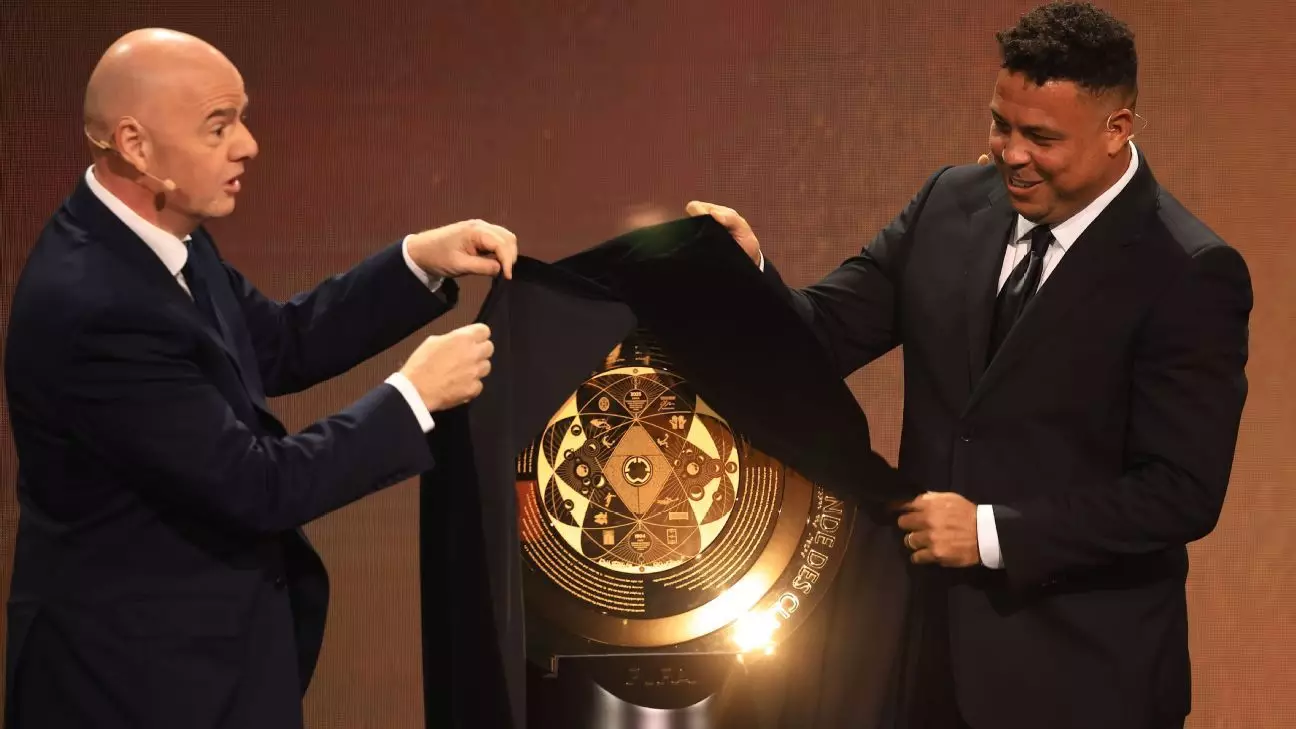The excitement in the football world soared as the draw for the FIFA Club World Cup, scheduled for the summer of 2024 in the United States, was unveiled. The tournament, which now features an expanded field of 32 teams, aims to highlight the international diversity of the sport. With Manchester City, the reigning champions, and a host of elite clubs from across the globe participating, anticipation for this monumental event is building.
The draw revealed a fascinating array of groupings. Manchester City found themselves in Group G alongside Juventus, Wydad Casablanca, and Al Ain. As the champions of England, City carries immense expectations but faces a challenging road ahead, particularly following a season marked by significant injuries to key players. Their opening match against Wydad Casablanca sets the stage for a riveting tournament experience.
On the other side of the draw, Lionel Messi, representing MLS side Inter Miami, draws considerable attention as they enter Group A, where they will contest against Al Ahly, Porto, and Palmeiras. The opening match featuring Messi is particularly noteworthy, not only because he brings star power but also as it emphasizes the growing stature of MLS on the global stage. This opening jamboree at Hard Rock Stadium in Miami Gardens signifies a new chapter for both the tournament and the league.
The roster of participating teams showcases a blend of seasoned powerhouses and budding talents. Heavyweights like Real Madrid, Bayern Munich, and Paris Saint-Germain are all eagerly anticipated sights in the tournament, bringing with them a legacy of success and skilled players. The inclusion of South American clubs like Flamengo, River Plate, and Fluminense ensures a vibrant representation from a continent rich with football culture.
As the host nation, the U.S. can boast five teams, including Inter Miami. This opportunity not only elevates the profile of the MLS but also reflects the league’s growth as a competitive force in football. MLS Commissioner Don Garber expressed optimism about showcasing nearly three decades of the league’s evolution, underlining the significance of competing against the world’s best—not just for the players, but for the entire league and its devoted fans.
The tournament follows a traditional format reminiscent of previous World Cups. Eight groups of four teams will compete in a round-robin style, with the top two teams advancing to a knockout stage of 16. This structure promises intense competition and ensures that every match carries weight in determining which teams progress.
With Europe securing the largest representation of 12 teams, the power dynamics of global football are reflected in this distribution. South America’s impressive six teams only serve to heighten the competitive nature of the tournament. This configuration not only illustrates the strength of European and South American football but also highlights the importance of representation from Africa, Asia, and Oceania.
The first round of matches includes several spectacular matchups that encapsulate the draw’s excitement. Paris Saint-Germain’s clash with Atletico Madrid in Group B is set to draw attention, not solely for the clubs’ prestige but for the incredible talents on display, including superstars Kylian Mbappé and, potentially, Neymar. Similarly, Real Madrid’s encounter with Al-Hilal, featuring an array of footballing brilliance, piques interest amongst global fans.
Chelsea, in Group D, faces Leon, followed by games against Flamengo and Esperance. The competition is fierce, and clubs must bring their best to navigate this challenging slate of matches. Fans can look forward to witnessing not just matches but battles between some of the sport’s most revered icons.
Ultimately, the FIFA Club World Cup serves as a critical platform not only to crown a global champion but also to foster the spirit of inclusivity within football. As FIFA President Gianni Infantino noted, this tournament unites clubs from all over the world, showcasing the sport’s variety and connecting different cultures through the common language of football.
With the tournament set against the backdrop of the United States’ preparations for the 2026 World Cup, it promises to be a resounding celebration of the sport’s growth over recent years. Fans, players, and clubs alike will be united in the excitement of global competition, making this one of the most anticipated football events in recent history.

